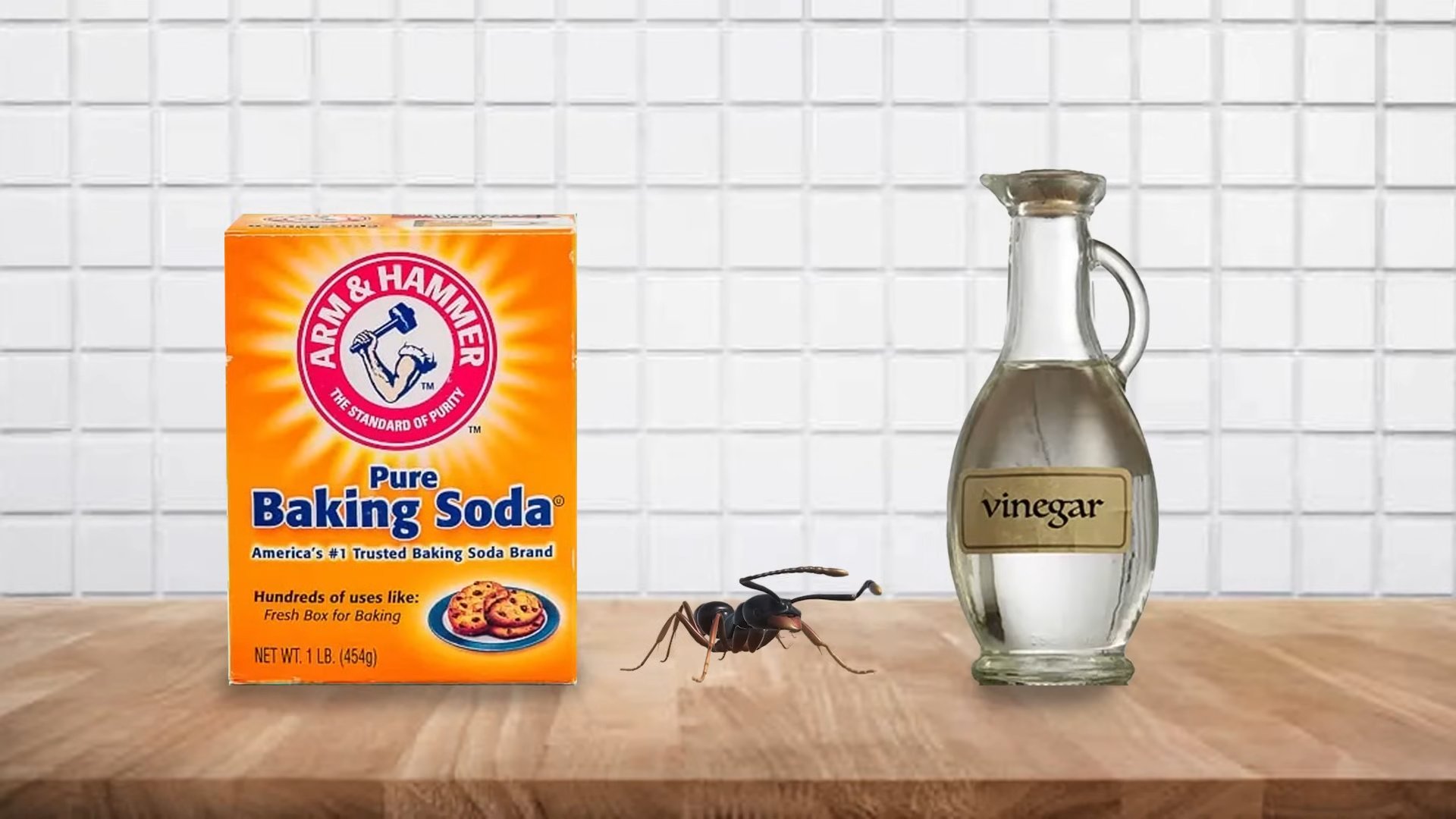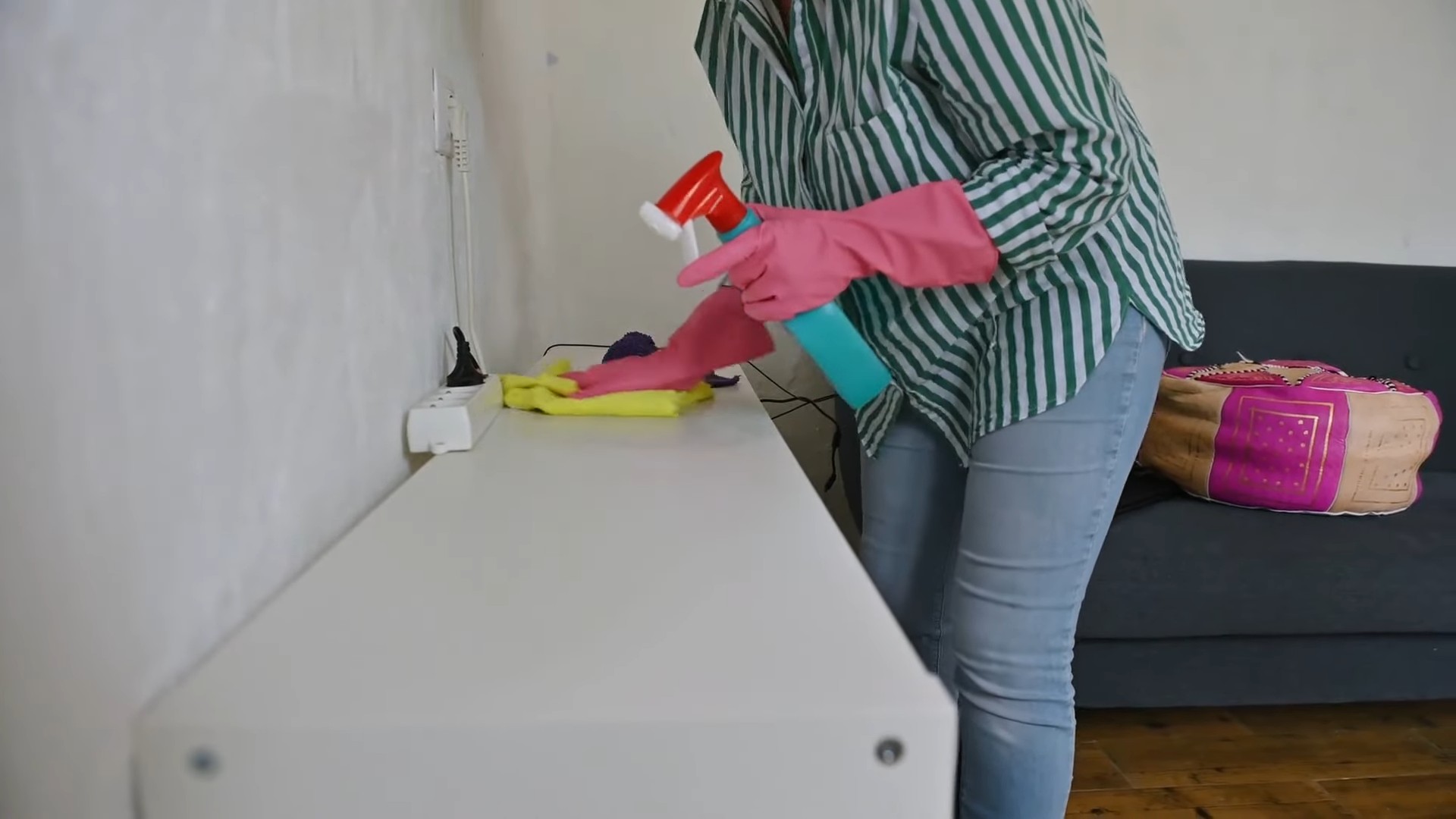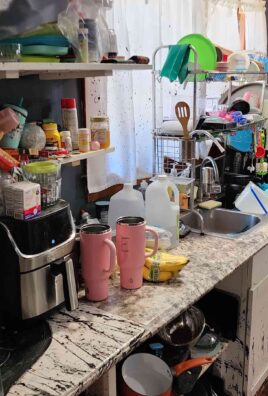DIY natural pest control is something I’ve become incredibly passionate about, and trust me, you will too! Are you tired of those pesky critters munching on your precious plants, leaving you feeling defeated and reaching for harsh chemicals? What if I told you there’s a better way, a way to protect your garden and the environment at the same time? This article is your ultimate guide to creating effective, all-natural pest control solutions right in your own kitchen.
For centuries, gardeners have relied on nature’s own arsenal to combat unwanted pests. Think about it – before the advent of synthetic pesticides, our ancestors cultivated thriving gardens using ingenious methods passed down through generations. These techniques, often rooted in deep understanding of plant interactions and natural predator-prey relationships, are just as relevant today.
In our modern world, the need for DIY natural pest control is more critical than ever. Concerns about the impact of chemical pesticides on our health, beneficial insects (like bees!), and the overall ecosystem are growing. Plus, let’s be honest, who wants to spend a fortune on expensive store-bought solutions when you can whip up something equally effective using ingredients you probably already have? I’m excited to share these simple yet powerful techniques that will help you create a healthy, vibrant, and pest-free garden, naturally!

DIY Natural Pest Control: A Gardener’s Best Friend
Hey there, fellow garden enthusiasts! Tired of those pesky critters munching on your precious plants? I totally get it! Store-bought pesticides can be harsh on the environment and, frankly, a bit scary to use around my family and pets. That’s why I’ve become a huge advocate for natural pest control. It’s effective, eco-friendly, and often uses ingredients you already have in your kitchen! Let’s dive into some of my favorite DIY solutions.
Understanding Your Garden Pests
Before we start mixing up concoctions, it’s important to know who you’re fighting. Identifying your garden pests is crucial for choosing the right natural remedy. Are you battling aphids, slugs, caterpillars, or something else entirely? Take some time to observe your plants closely. Look for signs of damage, like chewed leaves, holes, or sticky residue.
* **Aphids:** Tiny, pear-shaped insects that suck sap from plants. They come in various colors, including green, black, and yellow.
* **Slugs and Snails:** Slimy creatures that leave a trail of slime and chew irregular holes in leaves.
* **Caterpillars:** Larvae of moths and butterflies. They can devour leaves quickly.
* **Whiteflies:** Small, white, winged insects that fly up in a cloud when disturbed.
* **Spider Mites:** Tiny, spider-like pests that create webs on plants and cause stippling on leaves.
* **Japanese Beetles:** Metallic green beetles that skeletonize leaves.
Once you know your enemy, you can choose the most effective natural weapon!
DIY Pest Control Recipes
Here are some of my go-to recipes for keeping those unwanted guests away from my garden. Remember to always test a small area of your plant first to make sure it doesn’t react negatively to the spray.
1. Garlic Spray: The All-Purpose Repellent
Garlic is a powerhouse when it comes to pest control. Its strong scent repels a wide range of insects.
What you’ll need:
* 4-5 cloves of garlic
* 2 cups of water
* 1 teaspoon of liquid dish soap (optional, but helps the spray stick to the leaves)
* Spray bottle
Step-by-step instructions:
1. **Prepare the garlic:** Mince the garlic cloves finely. I usually use my food processor for this, but you can also chop them by hand.
2. **Infuse the water:** Place the minced garlic in a jar or container and pour the water over it. Let it steep for at least 24 hours, or even better, 48 hours. This allows the garlic’s compounds to infuse into the water.
3. **Strain the mixture:** After steeping, strain the garlic water through a cheesecloth or fine-mesh sieve to remove any solid pieces. This will prevent the sprayer from clogging.
4. **Add dish soap (optional):** If you’re using dish soap, add it to the strained garlic water and stir gently to combine.
5. **Pour into a spray bottle:** Transfer the mixture to a clean spray bottle.
6. **Apply to plants:** Spray the garlic solution liberally on the affected plants, paying particular attention to the undersides of the leaves where pests often hide. Reapply every few days, especially after rain.
2. Neem Oil Spray: A Broad-Spectrum Solution
Neem oil is derived from the neem tree and is a fantastic natural insecticide, fungicide, and miticide. It disrupts the life cycle of many pests, preventing them from feeding, mating, and laying eggs.
What you’ll need:
* 1 tablespoon of neem oil (100% cold-pressed neem oil is best)
* 1/2 teaspoon of liquid dish soap (as an emulsifier)
* 1 quart of warm water
* Spray bottle
Step-by-step instructions:
1. **Combine neem oil and dish soap:** In a small container, mix the neem oil and dish soap. The dish soap helps the neem oil emulsify (mix) with the water.
2. **Add water:** Slowly add the warm water to the neem oil and dish soap mixture, stirring constantly. Make sure everything is well combined.
3. **Pour into a spray bottle:** Transfer the mixture to a clean spray bottle.
4. **Apply to plants:** Spray the neem oil solution thoroughly on all parts of the plant, including the tops and undersides of the leaves, stems, and branches. It’s best to apply neem oil in the evening or early morning to avoid burning the leaves in direct sunlight. Reapply every 7-14 days, or as needed.
Important Note: Always follow the instructions on the neem oil bottle, as concentrations may vary.
3. Insecticidal Soap: A Gentle Killer
Insecticidal soap is a simple and effective way to control soft-bodied insects like aphids, whiteflies, and spider mites. It works by disrupting the insect’s cell membranes, causing them to dehydrate and die.
What you’ll need:
* 1-2 tablespoons of liquid dish soap (use a pure soap, not a detergent with additives)
* 1 quart of water
* Spray bottle
Step-by-step instructions:
1. **Mix soap and water:** In a container, mix the dish soap and water.
2. **Pour into a spray bottle:** Transfer the mixture to a clean spray bottle.
3. **Apply to plants:** Spray the insecticidal soap solution liberally on the affected plants, making sure to cover all surfaces of the leaves and stems. Reapply every few days, as needed.
Important Note: Test the solution on a small area of the plant first to make sure it doesn’t cause any damage. Avoid using insecticidal soap on delicate plants or during hot, sunny weather.
4. Diatomaceous Earth (DE): The Crawling Insect Barrier
Diatomaceous earth (DE) is a naturally occurring powder made from the fossilized remains of diatoms (a type of algae). It’s harmless to humans and pets but deadly to insects with exoskeletons. The tiny, sharp edges of the DE cut through the insect’s protective coating, causing them to dehydrate and die.
What you’ll need:
* Food-grade diatomaceous earth
* Duster or shaker
Step-by-step instructions:
1. **Apply DE to plants:** Sprinkle a thin layer of DE around the base of your plants and on the leaves, stems, and flowers. You can use a duster or shaker to apply the DE evenly.
2. **Apply DE to problem areas:** Focus on areas where you’ve seen pests, such as around the base of plants, along pathways, and in cracks and crevices.
3. **Reapply after rain:** DE is most effective when it’s dry, so reapply it after rain or watering.
Important Note: Use food-grade DE, as other types may contain harmful chemicals. Avoid inhaling DE, as it can irritate the lungs. Wear a mask if you’re applying a large amount of DE.
5. Companion Planting: The Natural Defense System
Companion planting involves planting different plants together that benefit each other. Some plants repel pests, while others attract beneficial insects that prey on pests.
Some helpful companion planting combinations:
* **Marigolds:** Repel nematodes, aphids, and whiteflies. Plant them near tomatoes, peppers, and other vegetables.
* **Basil:** Repels flies and mosquitoes. Plant it near tomatoes and peppers.
* **Nasturtiums:** Attract aphids, diverting them away from other plants. They also attract beneficial insects.
* **Garlic:** Repels aphids, Japanese beetles, and other pests. Plant it near roses, tomatoes, and other vegetables.
* **Lavender:** Repels moths, fleas, flies, and mosquitoes. Plant it near entrances to your home or in your garden.
6. Beer Traps for Slugs and Snails: The Bait and Trap Method
Slugs and snails are attracted to the yeast in beer. You can use this to your advantage by creating beer traps.
What you’ll need:
* Shallow containers (e.g., tuna cans, yogurt cups)
* Beer (any kind will do, but cheap beer works just as well)
Step-by-step instructions:
1. **Bury the containers:** Dig small holes in the ground near your plants and bury the containers so that the rims are level with the soil surface.
2. **Fill with beer:** Pour beer into the containers, filling them about halfway.
3. **Check and empty regularly:** Check the traps every day or two and empty them of dead slugs and snails. Refill with fresh beer as needed.
7. Copper Tape Barrier: The Slug and Snail Deterrent
Slugs and snails don’t like to crawl over copper. You can use copper tape to create a barrier around your plants, preventing them from reaching the leaves.
What you’ll need:
* Copper tape (available at

Conclusion
So, there you have it! Ditching harsh chemicals and embracing this DIY natural pest control method is more than just a trend; it’s a conscious choice for a healthier home, a thriving garden, and a happier planet. We’ve explored how simple ingredients, often already in your pantry, can become powerful allies in the fight against unwanted critters. From the zesty citrus sprays that deter aphids to the diatomaceous earth that acts as a natural barrier, the possibilities are surprisingly diverse and effective.
But why is this a must-try? Beyond the obvious benefits of avoiding toxic chemicals, this approach is incredibly cost-effective. Think about it: no more expensive trips to the store for specialized pest control products. Instead, you’re utilizing readily available, affordable ingredients. Plus, you have complete control over what you’re using, ensuring the safety of your family, pets, and the beneficial insects that contribute to a healthy ecosystem.
Don’t be afraid to experiment! The beauty of DIY lies in its adaptability. Feeling adventurous? Try adding a few drops of essential oils like peppermint or lavender to your spray for an extra boost of pest-repelling power and a pleasant aroma. For crawling insects, consider creating a barrier of copper tape around vulnerable plants. You can also adjust the concentration of your solutions based on the severity of the infestation. Remember to always test a small area first to ensure no adverse reactions occur, especially on delicate plants.
Another variation to consider is companion planting. Certain plants naturally repel pests, so strategically placing them around your garden can create a natural defense system. Marigolds, for example, are known to deter nematodes and other harmful insects. Basil can repel flies and mosquitoes. Research which plants are beneficial for your specific garden and pest concerns.
This isn’t just about getting rid of pests; it’s about creating a balanced and sustainable environment. By choosing natural methods, you’re supporting biodiversity and promoting a healthier ecosystem for everyone.
We wholeheartedly encourage you to give these DIY natural pest control methods a try. Start small, experiment with different recipes, and observe the results. The satisfaction of creating a pest-free environment using natural ingredients is truly rewarding.
And most importantly, we want to hear about your experiences! Share your successes, your challenges, and your own unique variations in the comments below. Let’s build a community of eco-conscious gardeners and homeowners who are committed to protecting our planet, one pest at a time. Your insights could be invaluable to others who are just starting their journey with natural pest control. Let us know what worked for you, what didn’t, and any tips you’ve discovered along the way. Together, we can create a wealth of knowledge and empower each other to make a positive impact on our environment. So, get creative, get experimenting, and get sharing! Your voice matters, and your experience can help others embrace the power of natural pest control.
Frequently Asked Questions (FAQ)
Q: Are these DIY natural pest control methods really effective?
A: Yes, many DIY natural pest control methods can be highly effective, especially for mild to moderate infestations. The key is consistency and choosing the right method for the specific pest you’re dealing with. For example, neem oil is excellent for controlling aphids and spider mites, while diatomaceous earth is effective against crawling insects like ants and slugs. Remember that natural methods often require more frequent application than chemical pesticides, but the long-term benefits for your health and the environment are well worth the effort. It’s also important to identify the source of the infestation and address any underlying issues, such as poor drainage or overcrowding of plants.
Q: What are the most common ingredients used in DIY natural pest control?
A: Some of the most common and effective ingredients include:
* **Neem Oil:** A natural insecticide derived from the neem tree, effective against a wide range of pests.
* **Diatomaceous Earth (DE):** A powder made from fossilized algae, which dehydrates insects. Make sure to use food-grade DE.
* **Insecticidal Soap:** A mixture of soap and water that suffocates soft-bodied insects.
* **Garlic:** Garlic spray repels many insects due to its strong odor.
* **Citrus Peels:** Citrus peels contain oils that are toxic to some insects.
* **Vinegar:** A natural disinfectant and repellent for certain pests.
* **Baking Soda:** Can be used to control fungal diseases and deter some insects.
* **Essential Oils:** Certain essential oils, like peppermint, lavender, and tea tree oil, have insect-repelling properties.
Q: Are these methods safe for pets and children?
A: Generally, DIY natural pest control methods are safer for pets and children than chemical pesticides. However, it’s still important to exercise caution. Always store ingredients out of reach of children and pets. When applying sprays, keep pets and children away from the treated area until it has dried completely. Some essential oils can be toxic to pets, so research carefully before using them. Diatomaceous earth can be irritating to the lungs if inhaled, so wear a mask when applying it. Always read the labels of any ingredients you use and follow the instructions carefully. If you have any concerns, consult with a veterinarian or pediatrician.
Q: How often should I apply these DIY pest control solutions?
A: The frequency of application depends on the specific pest, the severity of the infestation, and the weather conditions. Generally, you should apply sprays every 7-10 days, or more frequently if you notice a resurgence of pests. After rain, you may need to reapply the solution. For diatomaceous earth, reapply after it gets wet. Regularly inspect your plants for signs of pests and address any problems promptly. Consistent monitoring and timely application are key to successful natural pest control.
Q: Can I use these methods on all types of plants?
A: While most DIY natural pest control methods are safe for a wide range of plants, it’s always a good idea to test a small area first, especially on delicate plants or seedlings. Some plants may be sensitive to certain ingredients, such as soap or essential oils. Observe the treated area for any signs of damage, such as leaf burn or discoloration. If you notice any adverse reactions, discontinue use immediately.
Q: What if these DIY methods don’t work?
A: If DIY methods are not effective, it may be necessary to consider other options. First, double-check that you are using the correct method for the specific pest you’re dealing with and that you are applying it correctly and consistently. You may also need to adjust the concentration of your solutions or try a different combination of ingredients. If the infestation is severe, you may need to consult with a professional pest control service. However, before resorting to chemical pesticides, explore all natural options and consider implementing preventative measures, such as improving soil health, providing adequate drainage, and promoting beneficial insects.
Q: How can I attract beneficial insects to my garden?
A: Attracting beneficial insects is a great way to naturally control pests. Some ways to attract them include:
* **Planting flowers that attract beneficial insects:** Include plants like dill, fennel, yarrow, and sunflowers.
* **Providing a water source:** A shallow dish of water with pebbles for insects to land on can be helpful.
* **Avoiding the use of broad-spectrum pesticides:** These can kill beneficial insects as well as pests.
* **Providing shelter:** Leave some areas of your garden undisturbed to provide shelter for beneficial insects.
* **Using companion planting:** Certain plants attract beneficial insects, such as marigolds and basil.
Q: Where can I find more information about DIY natural pest control?
A: There are many resources available online and in libraries. Look for reputable websites and books that provide detailed information about specific pests and natural control methods. University extension services are also a great source of information. Be sure to research thoroughly and choose methods that are appropriate for your specific needs and environment. Remember to always prioritize safety and sustainability when choosing pest control methods.





Leave a Comment